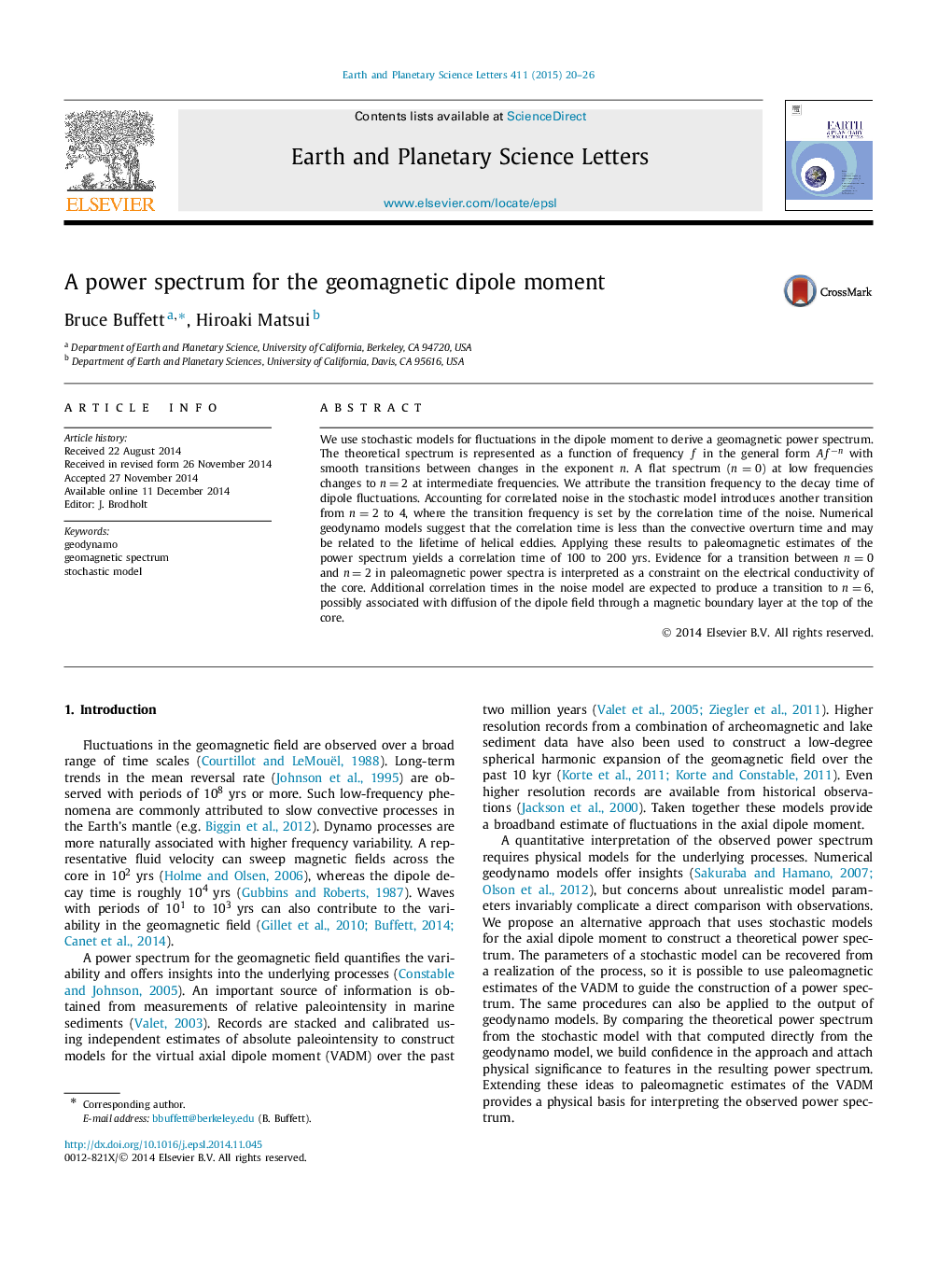| Article ID | Journal | Published Year | Pages | File Type |
|---|---|---|---|---|
| 6428403 | Earth and Planetary Science Letters | 2015 | 7 Pages |
â¢Stochastic model is used derive a power spectrum for the geomagnetic field.â¢Spectrum has the form fân, where n=0,2,4,⦠takes even integer values.â¢Observed transition in paleomagnetic spectrum provides evidence for high electrical conductivity.
We use stochastic models for fluctuations in the dipole moment to derive a geomagnetic power spectrum. The theoretical spectrum is represented as a function of frequency f in the general form Afân with smooth transitions between changes in the exponent n. A flat spectrum (n=0) at low frequencies changes to n=2 at intermediate frequencies. We attribute the transition frequency to the decay time of dipole fluctuations. Accounting for correlated noise in the stochastic model introduces another transition from n=2 to 4, where the transition frequency is set by the correlation time of the noise. Numerical geodynamo models suggest that the correlation time is less than the convective overturn time and may be related to the lifetime of helical eddies. Applying these results to paleomagnetic estimates of the power spectrum yields a correlation time of 100 to 200 yrs. Evidence for a transition between n=0 and n=2 in paleomagnetic power spectra is interpreted as a constraint on the electrical conductivity of the core. Additional correlation times in the noise model are expected to produce a transition to n=6, possibly associated with diffusion of the dipole field through a magnetic boundary layer at the top of the core.
